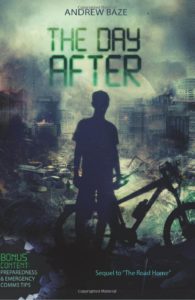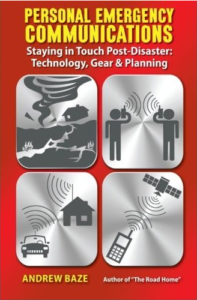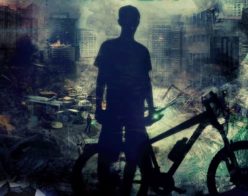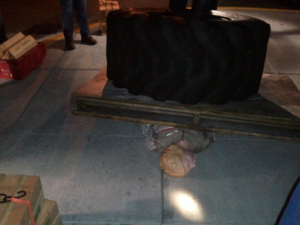Day 5 – Terrorism, Hazardous Materials, and Disaster Psychology
Day 5 was an interesting mix of topics: terrorism/hazmat and disaster psychology.
Terrorism/Hazmat
In the first part, we reviewed procedures for hazmat (hazardous materials) and terrorism. As far as CERT is concerned, they’re about the same. Get out. Easy, right? Do you feel prepared now to deal with a hazmat or terrorism scenario? I hope not. Let’s dig a little deeper. But don’t get your hopes up. Just as CERT training won’t train you up to paramedic or EMT level, it also won’t transform you into a counter-terrorism expert or professional hazmat responder. But it will get you thinking!
Since the responses to a hazmat scenario and terrorism are largely similar, we’ll focus on the worse version – terrorism. We started by reviewing what kind of targets exist in our area. They will be similar in your area:
- Big business, shopping malls
- Military facilities
- Schools
- Bridges, tunnels, subways
- Government buildings
- Water supplies
You can easily think of more targets: anywhere where you can find a lot of people or stuff that people care about. This should be a somewhat discouraging exercise, and you will probably be able to think of many vulnerable areas. Isn’t it great that we don’t have to deal with terrorists frequently?
The types of terrorist attack are described with the acronym “CBRNE”, which stands for Chemical (e.g., chlorine gas), Biological (e.g., anthrax), Radiological (e.g., distributed radioactive material), Nuclear (e.g., a nuclear explosion), and Explosives (e.g., dynamite).
We quickly reviewed signs of potential terrorist activity (before the explosion goes off), and how we should react. You guessed it – call the police and get out.
But let’s say you arrive at a disaster scene, ready to help, and you realize that it’s a hazmat or terrorist scenario. Again, the guidance is simple: get out. But how far do you go? The fire department captain who taught this portion of the course gave us an easy-to-follow rule, one of the pearls of wisdom we received on this day:
“If you can hold up your thumb, and you can still see the scene, you are too close.” He told us to keep backing up until you thumb covers up everything. Not just “get out”, but “get really far out.”
And we briefly covered what to do if you need to shelter in place (aka “hunker down”). Assuming there is a cloud of danger (gas, radioactive material, whatever) heading your way, you’ll need to shut off your air conditioning (or furnace, or anything else that draws in outside air), cover any openings to the outside with plastic sheeting (sealed with duct tape), and turn on your radio. Obviously, you’ll want to seal door edges, any vents or heater ducts, and any other cracks in the room that would allow air to enter or exit.
Do you need to worry about suffocating? Not in the short term. There is a lot of air in even a small room (though you probably don’t want to choose a closet). I won’t do the calculations here. Do a little research and you can see for yourself (or let me know if you’re interested and I can write something up and post it).
A couple more caveats concerning contamination:
- Basic decontamination: remove all clothes, throw them away, and wash thoroughly
- Don’t go into a contaminated area (CERT training doesn’t teach you how to survive this!)
- Don’t become part of the problem – leave any hazmat or terrorism response to the professionals
Disaster Psychology
This next section was fascinating, and taught by the city chaplain. Don’t let that throw you! Not only did he not push any religion, he even cussed a little. He was not your typical religious figure, but he was a down-to-earth, slightly gritty, and helpful guy with some very important things to say.
“80% of trauma in a disaster is psychological.” He said this more than once, and we reviewed some examples. As I’ve said in other articles, this is heavy material, and you can expect that people will 1) act irrationally and 2) they may need some help recovering, or getting on the path to recovery.
What is the CERT responder’s role in dealing with people going through various stages of grief or otherwise dealing with their trauma? The chaplain had some simple (simple to discuss, much harder to implement effectively, but it’s the right direction) guidance:
- We (whoever has experience) do support, initial care in the first minutes, not long-term counseling
- Just acknowledge people’s grief – that’s all you can effectively do
- Help them make little decisions around what to do next
- People will be distressed, overloaded, and some will shut down
The people in real distress can get real comfort from talking with someone, and maybe that someone is you. Simply by being there to listen, you could make a big different to someone in need by answering these three, simple questions:
- Does anyone know I’m here?
- Does anyone know that I’m hurting?
- Does anyone care?
Hint: Answer “Yes” to all of them. And I hope you’re telling the truth!
What do you NOT want to do? Tell someone that “It’ll be OK.” It won’t be OK – something really bad has happened! “It’s for the best”, “Don’t worry about it”, or other such advice that won’t help people.
The chaplain added “I don’t tell them that we’ll get things back to normal. Things will never be normal again. They will move toward a new ‘normal’.”
Remember, after triage and first aid, expect that some people will need “psychological first aid.” This short article can’t prepare you, but a CERT class should give you a little more info and help you learn some of the basics.







